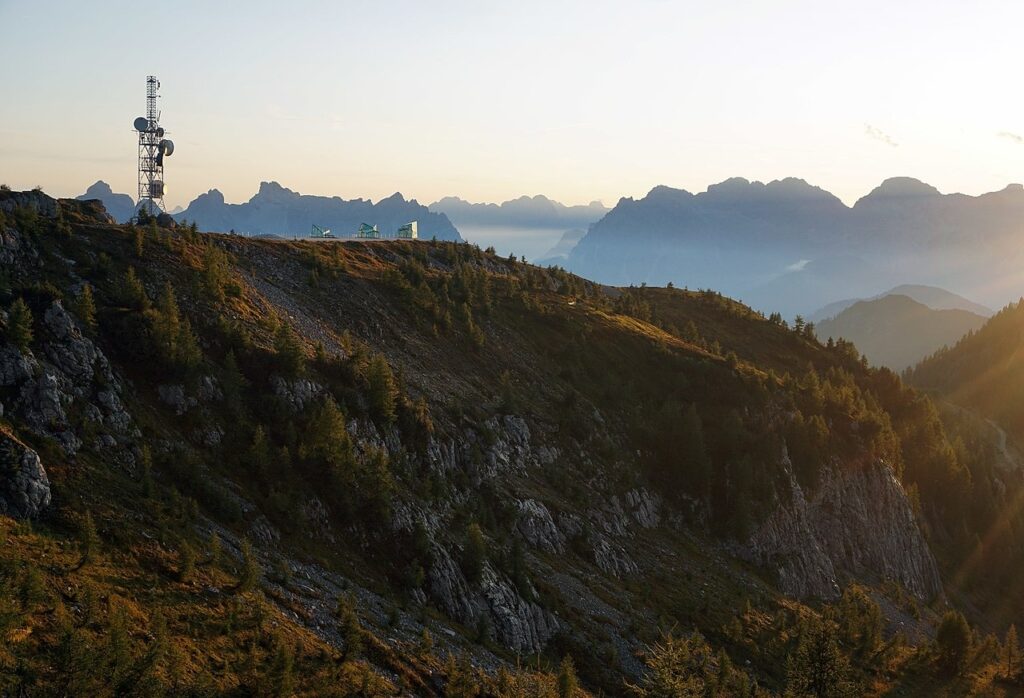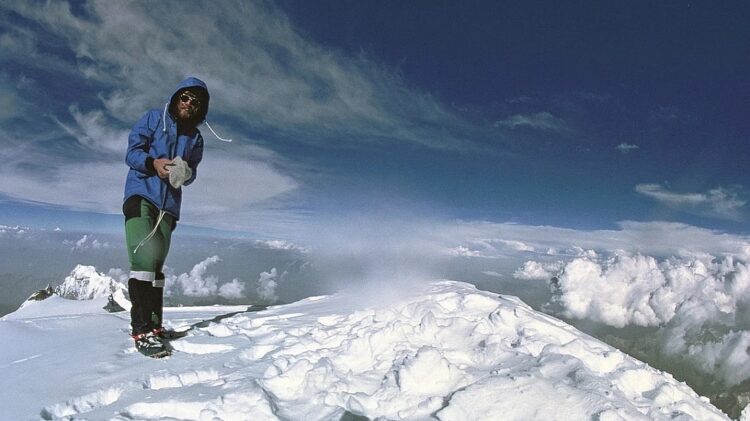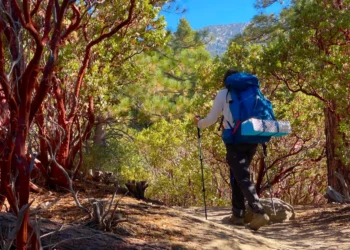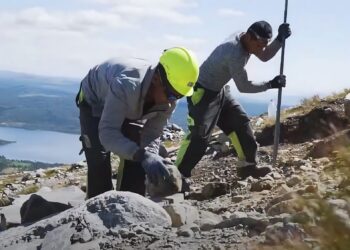Reinhold Messner was born on September 17, 1944 in St. Peter, Villnöß, South Tyrol, Italy. Over the course of his life, Messner has climbed the tallest and most dangerous peaks in the world. He holds multiple World Records and holds the second most “World’s Firsts.” His crave for adventure has also caused him to break further records outside of the alpine life including being the first to cross both Antarctica and Greenland without snowmobiles or dog sleds. He pioneered the modern alpine style of climbing and changed the sport forever. This is the life of the greatest mountaineer to ever live.
Where It All Started
Messner grew up in a German-speaking household with 8 other siblings. Since he lived in South Tyrol, a very mountainous region in northern Italy, Messner had ready access to the Alps and the Dolomites, the latter of which he deeply fell in love with. By spending his early years climbing these mountains, Messner was able to rapidly hone in his alpine skills at a very young age. Just at the age of 5, his father led him to his first summit. At the age of 13, he had joined with a new climbing partner, that being his younger brother Günther. Both were some of the best climbers in Europe by the time they were in their 20s.
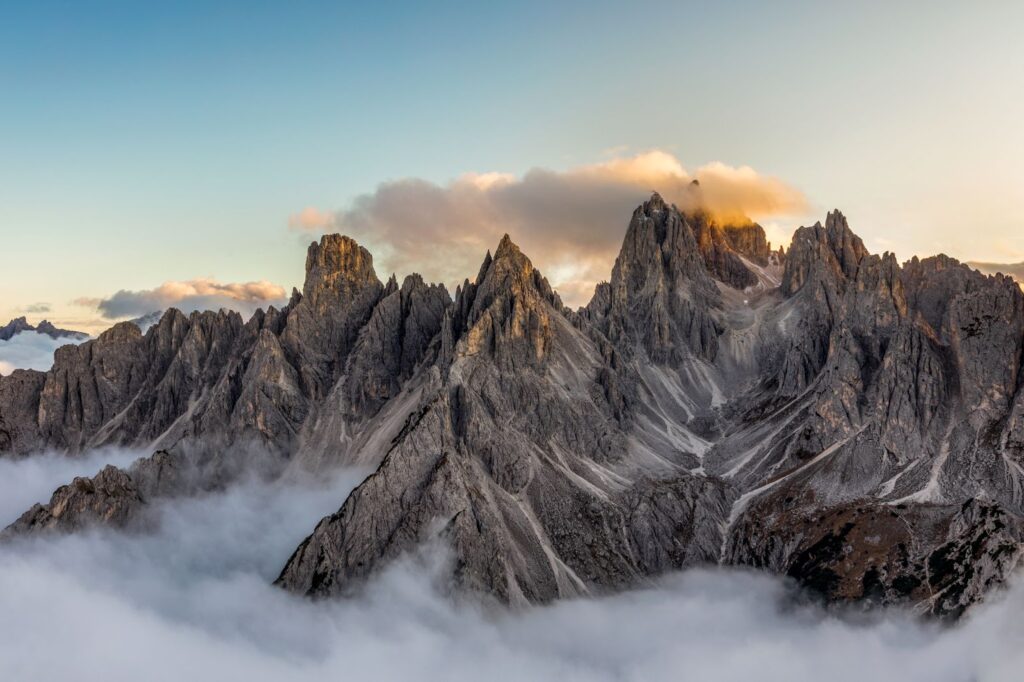
A Monumental Career
Messner established his reputation by leading over 500 ascents in the Dolomites and Alps from 1960 to 1964. This is the time where he began achieving his “Firsts.” In 1965, he climbed a new route on the north face of Ortler (3,905 m or 12,812 ft), the highest mountain in the eastern Alps outside of the Bernina Range. In 1967, he made the first ascent of the northeast face of Monte Agnér (2,872 m or 9,423 ft), the first winter ascent of the north face of Monte Agnér, and the first winter ascent of the north face of Furchetta (3,025 m or 9,925 ft). Just a year later, Messner made the first ascent of the Heiligkreuzkofel middle pillar and the first ascent of the south face of the Marmolada.
Not long after, Messner achieved his first major summit outside Europe. In 1969, he joined an expedition to the Andes in South America along with Peter Habeler, a famous Austrian mountaineer. Together, they made the first summit of Yerupaja (6,635 m or 21,768 ft) east face. Later, back in Europe, Messner achieved 3 more “Firsts” after which he made a name for himself as one of the best climbers on the continent.
In 1970, he had the opportunity to climb in the most desirable region for any mountaineer: the Himalayas. Messner was invited to join an expedition to attempt the Rupal face of Nanga Parbat (8,125 m or 26,657 ft) which was previously unclimbed. Joined with his brother, Günther, this summit would end up being successful yet tragic. Both reached the summit, however, Günther died two days later on the descent. Messner also lost 7 toes due to frostbite. He was devastated from the death of his beloved brother.
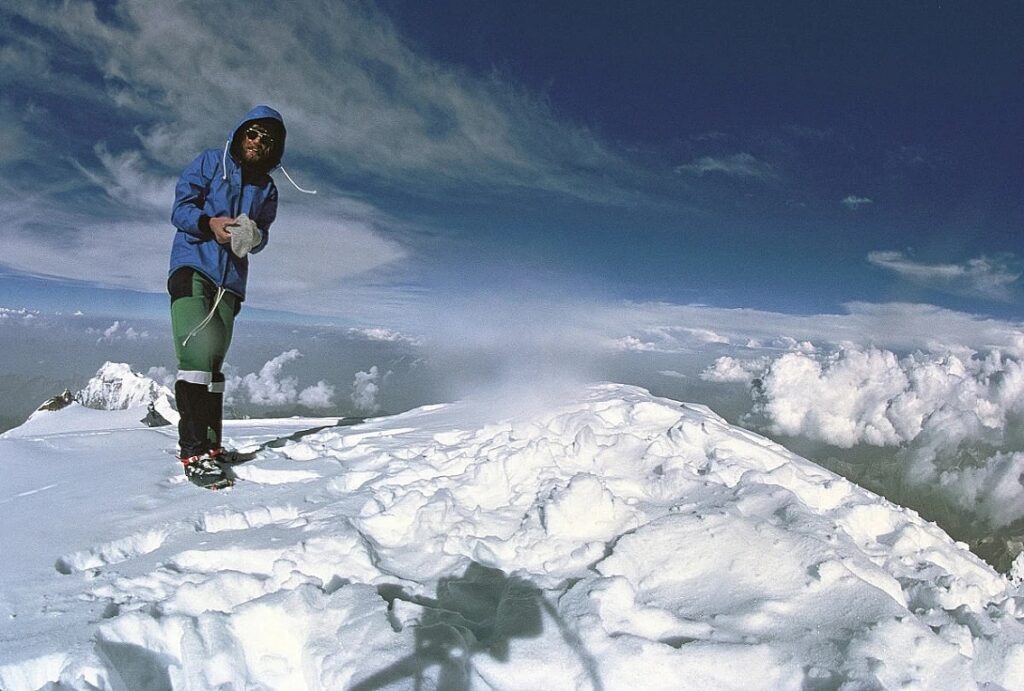
This first expedition in the Himalayas sparked Messner’s motivation to climb the highest peaks in the world. Interestingly, being the challenge chaser he was, Messner decided to complete many of these climbs solo without supplementary oxygen. In 1972, he made the first ascent of the south-west face of Manaslu (8,163 m or 26,781 feet), this being also the first ascent of Manaslu without supplemental oxygen. In 1975, he made the first ascent of Gasherbrum I (8,080 m or 26,510 feet) without supplemental oxygen. In 1978, Messner, along with Peter Habeler, made the first ascent of Mount Everest (8,848 m or 29,029 feet), the tallest mountain in the world, without supplementary oxygen. Also that same year, Messner summited Nanga Parbat again by establishing a new route on the Diamir Face which has since never been repeated. Just the next year, he summited K2 (8,611 m or 28,251 feet), nicknamed the Savage Mountain for its high mortality rate of around 25%. Messner, in 1980, made history and achieved what many say is his most incredible feat ever: the first solo ascent of Mount Everest without supplementary oxygen along a newly established North Face route. Many doctors and other mountaineers believed that this feat would be impossible as no human could survive at that altitude without extra oxygen. Despite this, Reinhold Messner pushed the limits of the human body and proved it could be done. After this, he kept piling on summits of the world tallest mountains including Shishapangma (8,027 m or 26,335 feet) in 1981, Kangchenjunga (8,586 m or 28,169 feet) in 1982 (new unclimbed North Face route), Gasherbrum II (8,034 m or 26,358 feet) in 1982, Broad Peak (8,051 m or 26,414 feet) in 1982 , Cho Oyu (8,188 m or 26,864 feet) in 1983, repeat summits of Gasherbrum I and II in 1984, Annapurna (8,091 m or 26,545 feet) in 1985 (unclimbed north-west face), Dhaulagiri (8,167 m or 26,795 feet) in 1985, Makalu (8,485 m or 27,838 feet) in 1986, and Lhotse (8,516 m or 27,940 feet) in 1986. With his summit of Lhotse, Reinhold Messner became the first person in history to have climbed all 14 eight-thousanders in the world.
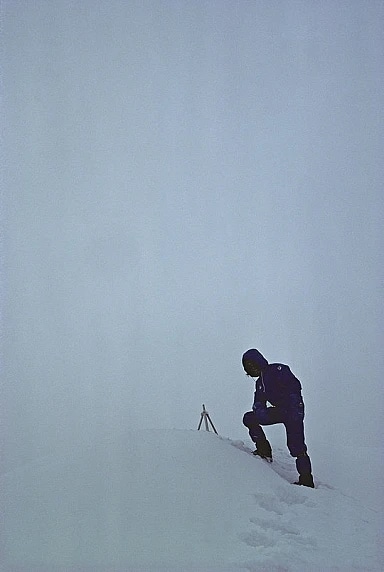
In between these astonishing climbs, Messner participated in over 35 other expeditions all over the world until 2005. Some notable ones are listed below:
- 1972 – Ascent of Noshaq (7,492 m or 24,580 feet) in the Hindu Kush
- 1974 – Ascent of Aconcogua (6,959 m or 22,831 feet) south wall along the new “South Tyrol Route”; Eiger North Face with Peter Habeler in 10 hours (record that stood for 34 years)
- 1976 – Ascent of Denali (6,193 m or 20,318 feet), first climb of the “Face of the Midnight Sun”
- 1978 – Ascent of Kilimanjaro (5,895 m or 19,341 feet) first climb of the “Breach Wall”
- 1979 – First climbs in the Hoggar Mountains of Africa
- 1981 – Ascent of Chamlang (7,317 m or 24,006 feet) first climb of Centre Summit-North Face
- 1986 – Ascent of Mount Vinson (4,897 m or 16,066 feet, Antarctica) becoming the first person to complete the Seven Summits without the use of supplemental oxygen on Mount Everest
- 1989-1990 – Antarctica crossing over the South Pole on foot (2,800 km or 1,700 mi)
- 1991 – Involved in the Ötzi find as he was among the groups who first inspected the mummy on-site the day after the discovery
- 1992 – Ascent of Chimborazo (6,310 m or 20,700 feet)
- 1993 – Greenland longitudinal crossing on foot (2,200 km or 1,400 mi)
- 2000 – Crossing of South Georgia on the Shackleton Route
- 2002 – Ascent of Cotopaxi (5,897 m or 19,347 feet)
- 2004 – Longitudinal crossing of the Gobi Desert on foot (2,000 km 1,200 mi)
Reinhold Messner holds 7 official “World’s Firsts” in the Guinness Book of Records. These are:
- First solo summit of Everest
- First 8,000-metre mountain hat-trick
- First ascent of Manaslu without supplementary oxygen
- First ascent of Everest and K2 without supplementary oxygen
- First ascent of the top three highest mountains without supplementary oxygen
- First ascent of Everest without supplementary oxygen
- First ascent of Gasherbrum I without supplementary oxygen
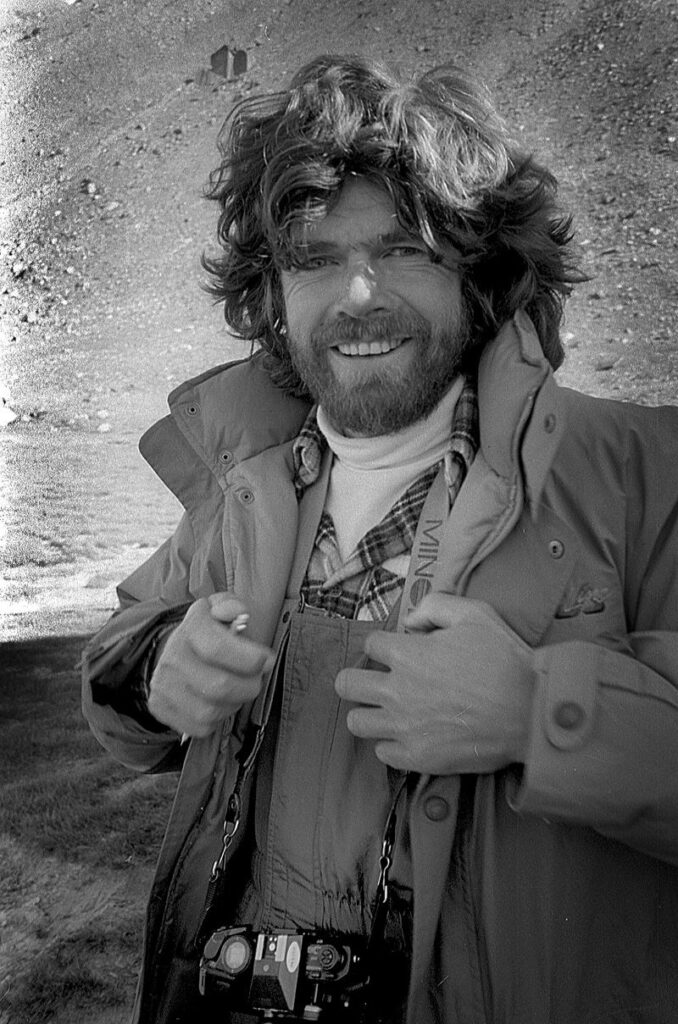
After the Mountains
After an illustrious career of climbing and adventures, Messner now spends his time helping others. He was elected to the European Parliament in 1999 and served one full term until 2004 representing the Italian Green Party. In October of 2003, he opened the Günther Mountain School, named to commemorate his late brother, in the Diamir Valley on Nanga Parbat. The school focuses on mountain/climbing education and provides training opportunities for aspiring mountaineers. In 2006, he launched the Messner Mountain Museum (MMM) project which consists of 6 different locations. Each one has a specific focus, however all of them generally display and educate visitors on the history of South Tyrol, Himalayan culture, alpinism, the sport of climbing, and a general appreciation for the beauty of mountains. Messner is also an avid author having published over 80 books about his experiences and adventures. Now, he spends most of his days on his humble farm, still managing the MMM project along with his foundation.
